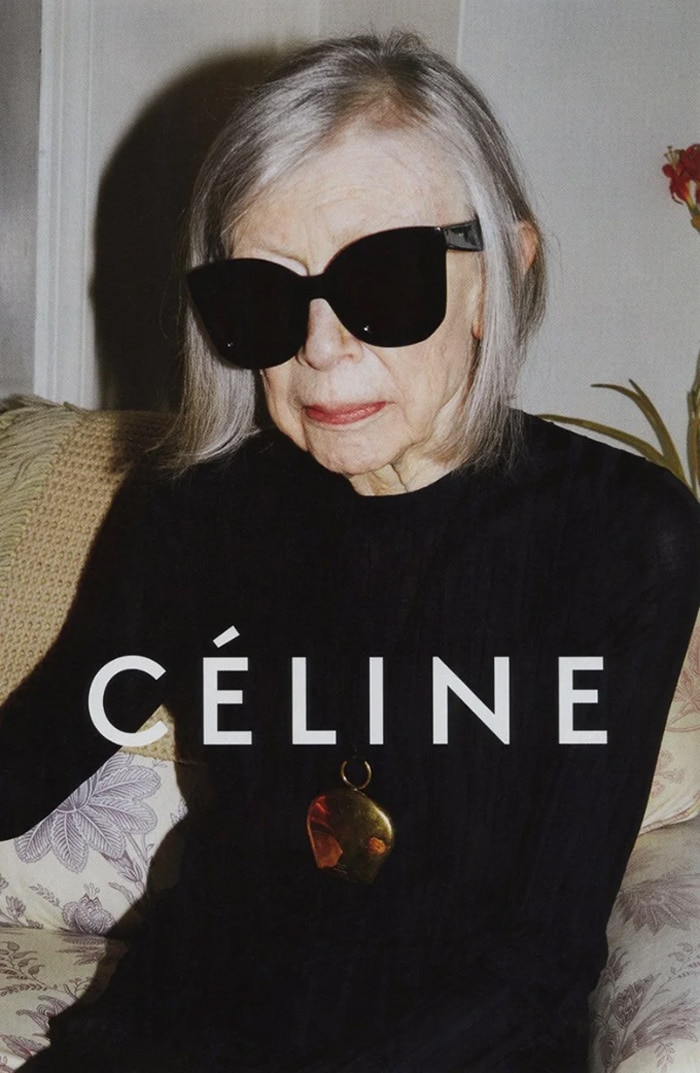Research shows that fashion’s obsession with youth could cost it £11 billion over the next 20 years
The fashion industry celebrates many things, such as beauty and creativity; ageing is definitely not one of them. While different ethnicities go in and out of style and curvy models appear here and there—ageing remains the biggest fashion taboo. Until now, the power of older generations has been completely ignored by most fashion brands, simply because ‘old’ is not trendy. Now, it turns out, the fashion industry might be in big trouble as the International Longevity Centre’s (ILC) research showed.
The research, titled Time for the fashion and beauty industry to wake up to the potential of an older customer, revealed that between 2011 and 2018 there had been a £2.9 billion growth in spending on clothes and shoes by older people. In the next 20 years, spending on fashion by older people will increase by £11 billion. By 2040, people aged 50 and over are expected to be this sector’s key consumer base. Back to 2020—the soon-to-be ‘key consumers’ are hardly represented or celebrated in the oh-so-open-minded fashion industry.
Fashion’s obsession with youth is representative of our own society’s obsession with it. If you’re young, then you must be prettier than an older person, at least that’s how most of us think. Western cultures fetishise youth and ageing tends to be seen in a negative light because, yes, death is scary, but also because we associate shame with being old.
This mentality is exactly what is stopping the fashion industry from making even more money than it already does. The research showed that brands are particularly good at making older people feel out of place, and therefore, women older than 75 stop spending on fashion altogether. That’s why elders’ savings that could potentially go into stylish clothes are not spent on any of the big names of the fashion industry.
But there seems to be a slight shift happening. Since Demna Gvasalia’s arrival at Balenciaga, the brand’s runways have included more and more older models (or should I say ‘mature’ models) and the same can be said about his other brand, Vetements. Celine’s previous creative director Phoebe Philo had the genius idea of featuring the author Joan Didion in a 2015 campaign for the brand. Gucci and Dolce & Gabbana have also featured older women in some of their advertisements. Iris Apfel is one of the few older fashion icons that made it into the very carefully chosen elite. As good as this all sounds, however, advertising and runways have not become the norm.

Photographer and author Ari Seth Cohen is also the creator of Advanced Style, a project devoted “to capturing the sartorial savvy of the senior set.” On his website, he says, “I feature people who live full creative lives. They live life to the fullest, age gracefully and continue to grow and challenge themselves.” Cohen is doing exactly the opposite of what fashion brands have been doing, he’s not ignoring them but instead celebrating them.
Screen Shot spoke to Cohen about the shift that is or at least needs to be happening in the fashion industry. “I have definitely seen a huge shift in how age is being represented in fashion advertising since I started featuring photos of stylish older men and women in my blog and books over 12 years ago,” he said. It seems that the industry is slowly realising the potential of older generations. According to Cohen, they were “almost completely ignored by the media and fashion brands, and if they were shown it was almost always in a stereotypical and patronizing way.”
Yes, there are older models walking the runways and some even become quite successful but as Cohen shared, “older models are oftentimes featured alongside younger models as a sign of tokenism by brands as a way to appear progressive and inclusive without really considering the older consumer and how they want to be represented or what kind of products they want and need.” Some of you might wonder what brands can do to accelerate this shift. Easy, explains Cohen, “listen to their customers and consult and work with older people to hear what they would like to see.”
It is time fashion makes growing older something trendy. But do you know why fashion is still so obsessed with youth and why it still hasn’t tackled its ageism problem? Just like art—it takes our society’s views and desires, and replicates them times ten. So maybe we should try to alter the way we perceive older generations for fashion to actually start doing the same.






